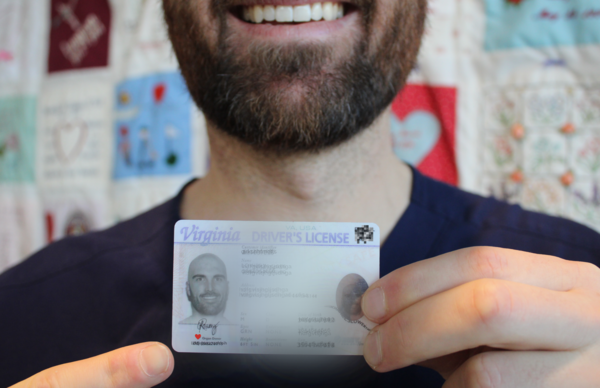One person can save up to 8 lives through organ donation and save and heal more than 75 lives through tissue donation.
What organs and tissues are transplantable?
ORGANS
Kidneys
- The kidneys filter wastes and excess water from the blood and balance the body’s fluids.
- While waiting for a kidney transplant, many patients undergo dialysis to remove toxins out of their blood. Some conditions that could make a kidney transplant necessary are high blood pressure, diabetes and cystic kidney disease.
- Kidneys are the most needed and most commonly transplanted organ.
Heart
- The heart is the body’s hardest working muscle – it beats 60-80 times each minute as it pumps blood throughout the body.
- Some conditions that can make a heart transplant necessary are cardiomyopathy, heart failure, myocarditis and heart disease.
Lung
- The trachea or windpipe carries air to the lungs where alveoli (tiny air sacs similar to folded balloons) extract oxygen and exchange it for carbon dioxide.
- A single lung can save a life. One donor can save the lives of two people by donating their lungs.
- Some conditions that can make a lung transplant necessary are cystic fibrosis, pulmonary hypertension, emphysema and pulmonary edema.
Liver
- The liver is a complex organ that has more than 500 known functions. It breaks down harmful substances in the blood, produces bile that aids in digestion and stores vitamins, sugars and fats.
- A donated liver can sometimes be split between two recipients, so one donor can potentially save the lives of two people.
- Some conditions that can make a liver transplant necessary are birth defects of the liver or bile duct, chronic liver infections like hepatitis or damage to the organ from drugs or alcohol.
Pancreas
- The pancreas produces insulin, a hormone that helps the body use glucose (sugar) for energy, and enzymes that break down fat, protein and carbohydrates during digestion.
- The pancreas is often transplanted with a kidney because diabetes affects both organs.
Intestines
- The intestines digest food and absorb nutrients in the blood stream.
- Some conditions that could make an intestine transplant necessary are twisted or blocked intestines or short-gut syndrome.
TISSUES
Corneas
- Corneas are the clear, dome-shaped window covering the front of the eye.
- Cornea transplants may be necessary following traumatic accidents to the eye, infections or inherited eye diseases. Cornea transplants restore sight to those that have lost their vision.
- Almost anyone, regardless or age or medical condition, can donate their whole eyes or cornea for transplant and/or research.
Skin
- Skin is the body’s first defense against microbes and also regulates heat and fluids in the body.
- Utilized in medical therapy applications for wound care as well as for patients suffering from burns or other serious injuries. In the most severe cases, these dressings help heal and repair burns and may be the only effective treatment to save a burn survivor’s life.
- Thicker skin graphs can be transplanted for reconstructive surgeries such as breast reconstruction after a lifesaving mastectomy.
Heart Valves
- Blood is pumped through the heart’s four chambers aided by four heart valves that open and close to prevent blood from flowing backward.
- Heart valve replacements are essential for patients who suffer from congenital heart defects or diseases such as endocarditis, rheumatic fever, infections of the heart or to children born with malformed valves. Human heart valves provide the best long-term results and the best quality of life for the recipient and can be lifesaving.
Pericardium
- The pericardium is the membrane surrounding the heart that is used in brain and eye surgeries to reduce the risk of infection as well as wound care applications.
M/S Grafts (Bone and Connective Tissue)
- Bones are made up of living protein fibers that constantly rebuild themselves.
- Bone is used in a multitude of clinical applications (large and small) for painful and debilitating disorders that often render patients unable to stand, walk or function normally. Donated bone is effective in treating spinal fusions (often due to slipped disks), bone fractures, dental repairs, jaw surgery, replacement of malignant bone and the threat of amputation.
- Cartilage can be used for nose, facial, and ear reconstruction. Specifically, if someone has skin cancer removed from their nose, the cartilage is used to assist in the reconstruction and repair. Using one's own cartilage could create more infection, so it is preferred to use donor tissue.
- Connective tissue includes tendons, ligaments and cartilage that can be used in a variety of back, joint and leg surgeries such as hip replacement, knee reconstruction and spinal fusion. They are also used to repair common sports injuries such as ACL tears.
Arteries/Veins
- Arteries carry oxygenated blood from the heart to the rest of the body and veins bring the deoxygenated blood back.
- Saphenous and Femoral Veins/Arteries provide oxygen and collect deoxygenated blood from tissues in your lower leg and helps move it to your heart.
- Donated veins are utilized for patients who suffer from kidney disease/failure or those who require hemodialysis. Veins can be used for infections of the AV access (needed for hemodialysis), restoration of blood flow to the arms or legs, bypass surgeries that occur below the knee or as a replacement for a patient’s native vein/artery.
- The Aorto-Iliac is the main blood vessel carrying oxygen rich blood from the heart to the rest of the body. These grafts use in patients who have infected aneurysms or prosthetic graft infections.


